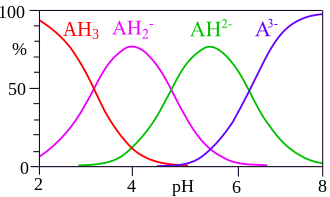Equilibrium chemistry



File:Separation02.ogv Canaiolo Equilibrium Chemistry is not a recognized term within the fields of chemistry or wine science. Therefore, this article will instead focus on the concept of equilibrium chemistry as it relates to wine making, with a particular emphasis on the role of grape varieties such as Canaiolo in the process.
Overview of Equilibrium Chemistry in Wine Making[edit]
Equilibrium chemistry is a branch of chemical science that studies the balance between reactants and products in chemical reactions. In the context of wine making, it is crucial for understanding how various chemical reactions affect the taste, aroma, and stability of wine. Equilibrium chemistry principles help winemakers manage processes such as fermentation, aging, and sulfite addition to achieve desired wine characteristics.
Role of Grape Varieties[edit]
Grape varieties, such as Canaiolo, play a significant role in the equilibrium chemistry of wine. Canaiolo is a grape variety primarily used in the production of Chianti, an Italian red wine. The chemical composition of the grapes, including acids, sugars, and phenolic compounds, influences the equilibrium of chemical reactions during wine making.
Acidity and pH[edit]
The acidity level in grapes, determined by acids such as tartaric acid and malic acid, affects the pH of the wine. The pH level, in turn, influences the equilibrium of chemical reactions, including the stability of color and the effectiveness of sulfites as preservatives.
Sugar and Alcohol Equilibrium[edit]
During fermentation, yeast converts sugars present in grapes into alcohol and carbon dioxide. The equilibrium between sugar and alcohol levels is critical for determining the wine's sweetness, body, and alcohol content. Grape varieties like Canaiolo, with their specific sugar content, directly influence this equilibrium.
Tannins and Color Stability[edit]
Tannins, phenolic compounds found in grape skins, seeds, and stems, contribute to the color, bitterness, and astringency of wine. The equilibrium between tannins and other wine components affects the aging potential and color stability of wine. The phenolic content of grape varieties such as Canaiolo is a key factor in this equilibrium.
Conclusion[edit]
While the term "Canaiolo Equilibrium Chemistry" does not directly correspond to a recognized scientific concept, the principles of equilibrium chemistry are fundamental to understanding the impact of grape varieties like Canaiolo on wine making. By studying the equilibrium between various chemical components in wine, winemakers can manipulate processes to produce wines with desired characteristics.
| This article is a stub. You can help WikiMD by registering to expand it. |
Ad. Transform your life with W8MD's Budget GLP-1 injections from $75


W8MD offers a medical weight loss program to lose weight in Philadelphia. Our physician-supervised medical weight loss provides:
- Weight loss injections in NYC (generic and brand names):
- Zepbound / Mounjaro, Wegovy / Ozempic, Saxenda
- Most insurances accepted or discounted self-pay rates. We will obtain insurance prior authorizations if needed.
- Generic GLP1 weight loss injections from $75 for the starting dose.
- Also offer prescription weight loss medications including Phentermine, Qsymia, Diethylpropion, Contrave etc.
NYC weight loss doctor appointmentsNYC weight loss doctor appointments
Start your NYC weight loss journey today at our NYC medical weight loss and Philadelphia medical weight loss clinics.
- Call 718-946-5500 to lose weight in NYC or for medical weight loss in Philadelphia 215-676-2334.
- Tags:NYC medical weight loss, Philadelphia lose weight Zepbound NYC, Budget GLP1 weight loss injections, Wegovy Philadelphia, Wegovy NYC, Philadelphia medical weight loss, Brookly weight loss and Wegovy NYC
|
WikiMD's Wellness Encyclopedia |
| Let Food Be Thy Medicine Medicine Thy Food - Hippocrates |
Medical Disclaimer: WikiMD is not a substitute for professional medical advice. The information on WikiMD is provided as an information resource only, may be incorrect, outdated or misleading, and is not to be used or relied on for any diagnostic or treatment purposes. Please consult your health care provider before making any healthcare decisions or for guidance about a specific medical condition. WikiMD expressly disclaims responsibility, and shall have no liability, for any damages, loss, injury, or liability whatsoever suffered as a result of your reliance on the information contained in this site. By visiting this site you agree to the foregoing terms and conditions, which may from time to time be changed or supplemented by WikiMD. If you do not agree to the foregoing terms and conditions, you should not enter or use this site. See full disclaimer.
Credits:Most images are courtesy of Wikimedia commons, and templates, categories Wikipedia, licensed under CC BY SA or similar.
Translate this page: - East Asian
中文,
日本,
한국어,
South Asian
हिन्दी,
தமிழ்,
తెలుగు,
Urdu,
ಕನ್ನಡ,
Southeast Asian
Indonesian,
Vietnamese,
Thai,
မြန်မာဘာသာ,
বাংলা
European
español,
Deutsch,
français,
Greek,
português do Brasil,
polski,
română,
русский,
Nederlands,
norsk,
svenska,
suomi,
Italian
Middle Eastern & African
عربى,
Turkish,
Persian,
Hebrew,
Afrikaans,
isiZulu,
Kiswahili,
Other
Bulgarian,
Hungarian,
Czech,
Swedish,
മലയാളം,
मराठी,
ਪੰਜਾਬੀ,
ગુજરાતી,
Portuguese,
Ukrainian